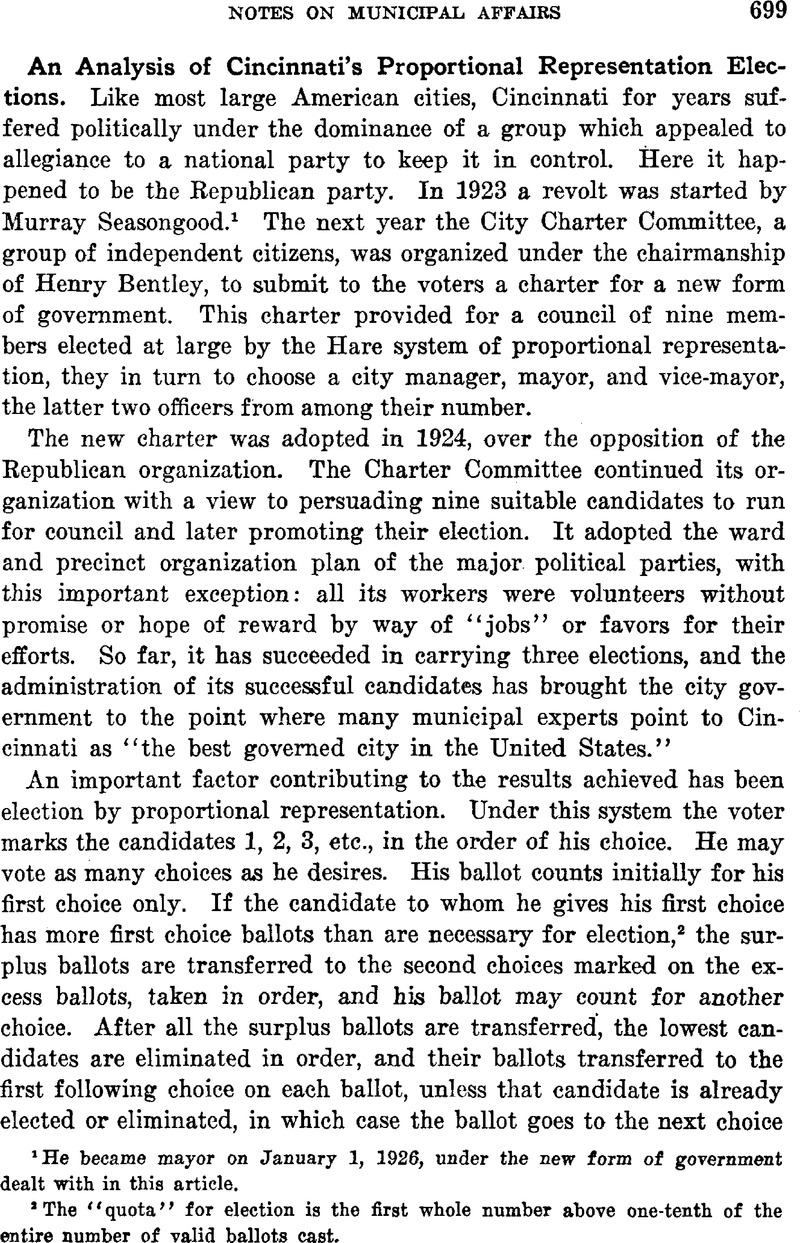Article contents
An Analysis of Cincinnati's Proportional Representation Elections
Published online by Cambridge University Press: 01 August 2014
Abstract

- Type
- Notes on Municipal Affairs
- Information
- Copyright
- Copyright © American Political Science Association 1930
References
1 He became mayor on January 1, 1926, under the new form of government dealt with in this article.
2 The “quota” for election is the first whole number above one-tenth of the entire number of valid ballots cast.
3 This appearance may be discounted, however, because many persons voted for the Democrats endorsed by the Charter Committee who would not have voted for a Democrat on a party ticket.
4 For instance, the outstanding independent of the Charter group, though during his first term subjected to repeated and virulent attacks by some newspapers and influential citizens, increased his first-choice vote from 20,543 in 1925 to 24,121 in 1927, the largest vote received by any candidate in any of the last three elections.
5 One was the so-called unaffiliated independent elected in 1927, but who after election went over to the Republican group.
6 The Republican and Democratic emblems on the old partisan ballots in Cincinnati were the eagle and the rooster.
7 The Republican candidates declared that they favored the manager plan of government and the retention of the existing city manager.
- 1
- Cited by





Comments
No Comments have been published for this article.